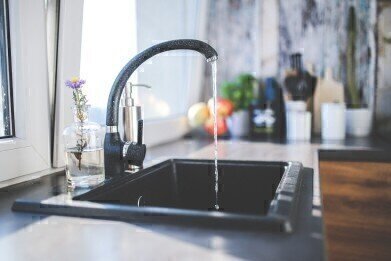Water/Wastewater
Is All Public Water the Same?
Mar 22 2020
A new study from Purdue University in Indiana, USA, has suggested that not all public water may be safe to drink – and that quality levels may even differ from room to room in the same house. The research, published in the journal Building and Environment, also discovered that water quality levels can fluctuate throughout the calendar year depending on the seasons.
The paper highlights how internal elements of a building’s plumbing system can impact upon the quality of water in any given room. Meanwhile, the fact that a significant percentage of the water sampled did not contain disinfectant additives upon entry into the home is cause for concern that many US homes do not receive adequate protection against the growth of bacteria in-situ.
ReNEWW House
The study is the largest of its kind to continuously study the quality of water throughout a single house over the course of a year. In order to carry it out, the team behind the study made use of the Retro-fitted Net-zero Energy, Water and Waste (ReNEWW) House in West Lafayette, Indiana, which is a purpose-built living laboratory specially designed to further our knowledge of sustainable homes. The house itself is funded by Whirlpool Corp., while the study was supported by the Environmental Protection Agency (EPA) and 28 public and private non-profit organisations.
The researchers visited the house on 58 different occasions throughout the year and made use of innovative online water quality monitoring technology to amass 2.4 billion records and collectively log 220,000 hours. For starters, their research uncovered that around 10% of the time, the water entering the house did not have any protection from disinfectants; it was also not present a staggering 85% of the time when leaving the house. They also found that there were huge discrepancies in the levels of organic carbon and pH levels throughout the house, while lead concentrations regularly surpassed the levels deemed safe by the authorities.
Food for thought
The results of the study show that American households may need to be more wary about the quality of the water coming from the taps throughout the building, especially in the summer period. This is because higher temperatures are more conducive to the growth and proliferation of micro-organisms, which can compromise the safety of the drinking water. Meanwhile, climate change could lead to higher temperatures outside of the summer months and more extreme bouts of precipitation, increasing the likelihood that sewer overflows could occur.
As such, the authors of the paper are calling on the scientific community and water companies to invest in more research on the subject, so that tenants and homeowners can understand more about the quality of the water they are drinking. It’s also thought that US utility companies could perhaps take a leaf out of their overseas counterparts to improve their current infrastructure. In Germany, for example, pressure sensing technology ensures smooth running processes in drinking water supplies all across the country, avoiding scenarios where residents do not have access to plentiful safe drinking water.
Digital Edition
IET 34.2 March 2024
April 2024
Gas Detection - Biogas batch fermentation system for laboratory use with automatic gas analysis in real time Water/Wastewater - Upcycling sensors for sustainable nature management - Prist...
View all digital editions
Events
Apr 22 2024 Hannover, Germany
Apr 22 2024 Marrakech, Morroco
Apr 23 2024 Kuala Lumpur, Malaysia
Apr 23 2024 Kintex, South Korea
Apr 23 2024 Edmonton, AB, Canada


















